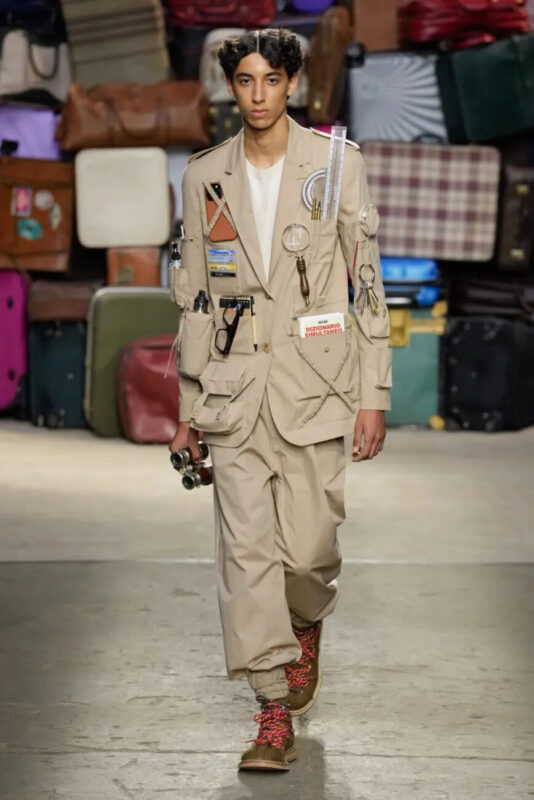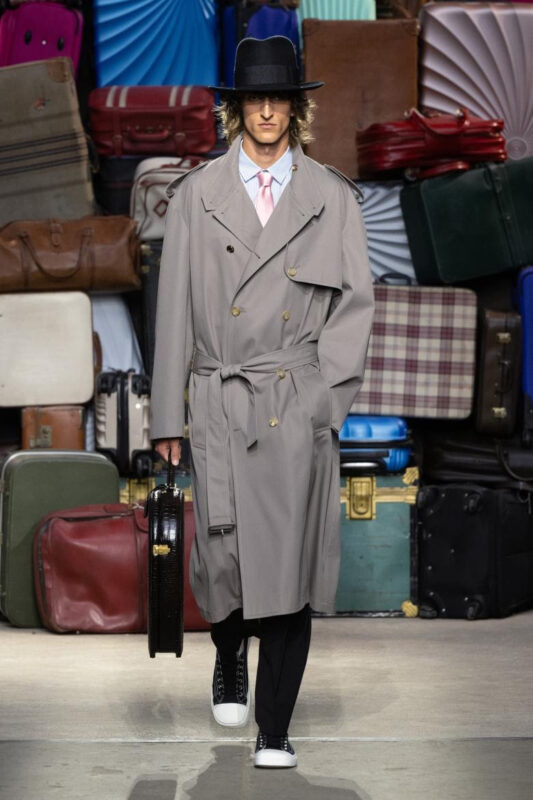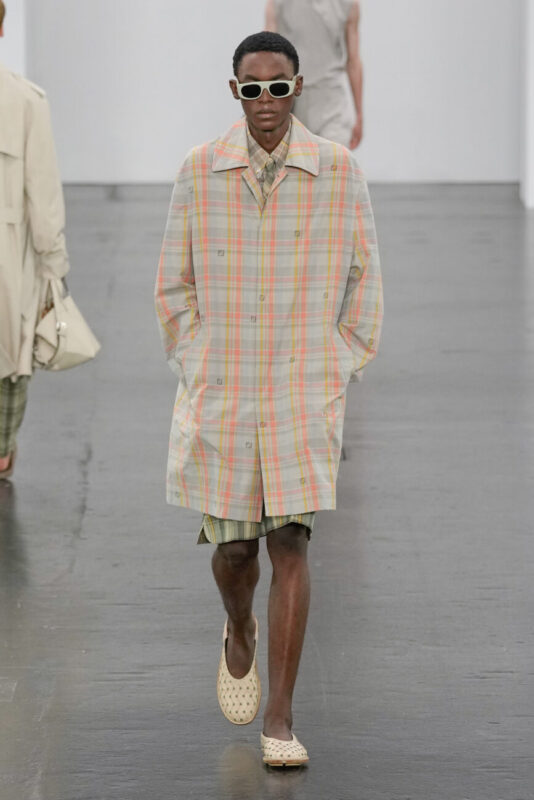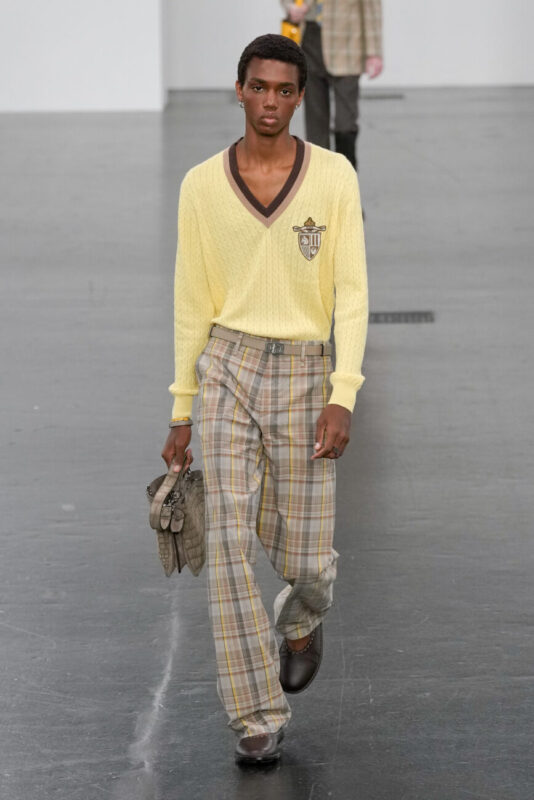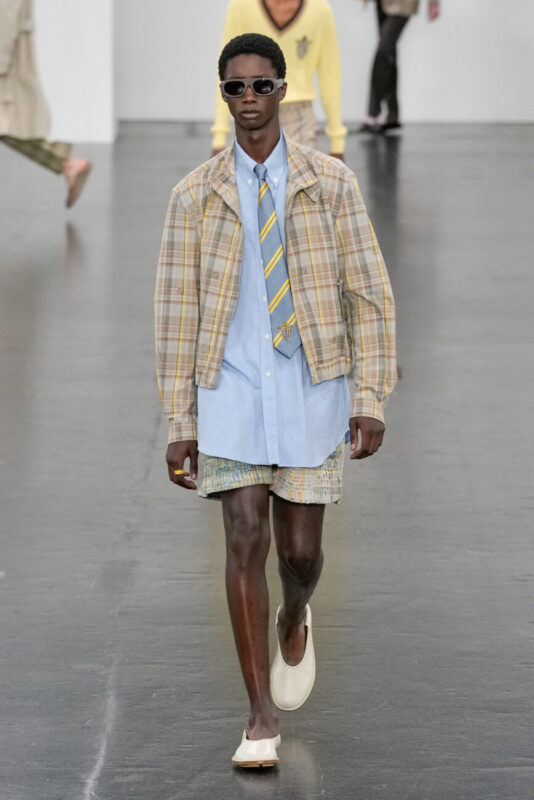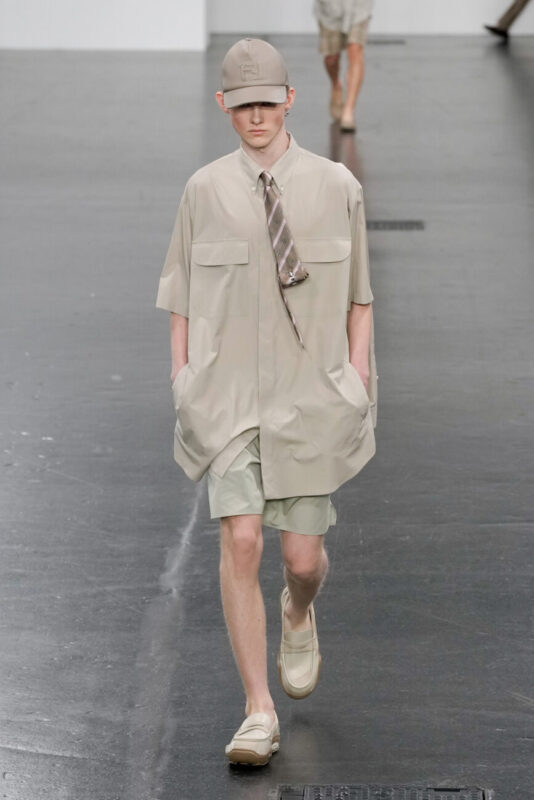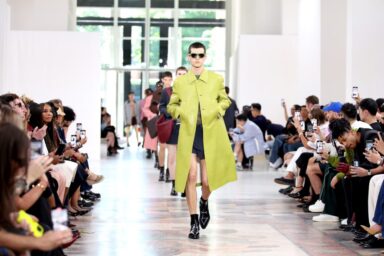Our perspective on some of the most remarkable fashion week shows so far.
Since we are in the midst of Milan Fashion Week with half of the weekend still ahead, here are the initial comments on the best Spring/Summer 2025 men’s shows around the city.
Moschino
For his menswear debut and second womenswear collection at Moschino, Adrian Appiolaza found inspiration in the unique realities of individual worlds and the diverse tapestry of human experiences. Journeying from Buenos Aires to Milan, with key stops in London and Paris, Appiolaza has mastered the art of interpreting urban archetypes, skillfully observing and listening to capture the essence of the cities we live in.
Symbols, scenes, and memories from Moschino’s archives intertwine with Franco’s ethos in a dynamic exchange. Iconic ’90s prints are reimagined and revived, featuring daisies, soccer balls, pizza sauce stains, and the Italian flag. Twisted trench coats, lingerie-inspired dresses, and innovative garment assemblages create fresh styles. The “Survival Jacket” from the Spring-Summer 1992 collection is reinterpreted for both urban life and adventurous escapes.
Modern fashion emerges through a fusion of genres and blurred boundaries, crafting a shared wardrobe for everyone. A scarf can transform into a skirt, and a men’s shirt can become a wedding dress. Traditions are challenged, unveiling new identities. A heart-shaped briefcase underscores the philosophy of doing what you love, even at work.
Neil Barrett
From Cary Grant to Jay Gatsby and James Bond, the pocket square and white dress handkerchief have long symbolized timeless elegance. In the Spring/Summer 2025 collection, this sartorial emblem is reinterpreted and applied to an array of unexpected garments: t-shirts, shirts, sweatshirts, and Harrington jackets. This tailoring detail transitions from formal wear to diverse contexts, where functionality becomes decoration, and the everyday transforms into an occasion.
The fabrics are luxurious and unexpected, redefining their usual contexts. The sheen of Duchesse satin and structured lightweight taffeta is enhanced by technical elements that breathe new life into outerwear, blazers, shirts, and trousers. Their volumes drape differently on the body, altering its shape, and are contrasted by classic cotton poplin and pure drill.
The color palette focuses on shades of blue, light greys, neutrals, and brown, enriched with vibrant jewel tones like alabaster pink, burgundy, ochre, and gold.
Building on a concept introduced last season, thoughtfully cut garments feature integrated sleeve holders throughout the collection, transforming how they are worn. The lower arms are left free, providing a sense of movement and freshness, elevating work, purpose, and self.
MSGM
MGMT’s “Time to Pretend” closed the MSGM show, just as it did in 2009 when Massimo Giorgetti debuted his first collection. Then, as now, it was a co-ed show bursting with energy, captivating the runway. Walls were splashed with live paint, the music set the tone, and there was a heartfelt tribute to the sea, dear to the Italian designer. This homage referenced both Rimini, his hometown, and Zoagli, where Giorgetti’s house, La Vedetta, was featured in prints and knits.
Celebrating 15 years of MSGM, the designer energetically revisited his signature elements—prints, stripes, acid colors, and tie-dye—to ride the summer wave with dolphins, crabs, and mermaids. Knots became dresses, the sun exploded in macramé, and lovestruck sailors appeared on tank tops enhanced by Luke Edward Hall’s watercolors. Sailor origami hats punctuated the looks.
Fendi
At Fendi, the ethos revolves around the idea that everything is achievable by blending shapes, volumes, and, most importantly, materials. This philosophy extends to clothing, viewed as modular elements that can be reconfigured to suit the wearer’s desired appearance. This adaptability has been intrinsic to Fendi’s fashion since its inception in 1977, marked by Karl Lagerfeld’s visionary approach captured in a pioneering film concept. Lagerfeld entrusted the “scenic realization” to Jacques de Bascher, his lifelong companion. Initially accessories for furs and handbags, Fendi’s garments evolved into narrative components, shaping the brand into its current form—three generations and a century after its founding.
In this preview of commemorative projects, the Fendi Men’s Spring/Summer 2025 collection emerges as a milestone, marking the brand’s centennial year. The artistic director, who famously walked the Fendi runway at age six as the daughter of a model couple, has been intricately involved with the men’s line since its debut in 1990. Her approach offers a historically innovative reinterpretation through distinctive symbols and cues embedded in the brand’s iconography.
The collection introduces the Peekaboo ISeeU Soft bag and a soft moccasin with a foldable heel akin to Moroccan babouches. These elements lay the foundation for a refined formula: bermuda shorts, shirts styled untucked, and a choice of jackets, blazers, or outerwear. Variations, both plausible and imaginative, are meticulously crafted along these thematic lines.

